Introduction:
Welcome to the enchanting world of Thailand, where ancient temples, pristine beaches, and lush national parks beckon you to embark on a once-in-a-lifetime adventure. As someone who has immersed themselves in the vibrant tapestry of Thai culture for several years, I am here to paint a vivid picture of this extraordinary country and ignite your wanderlust. From the mystical north to the captivating south, Thailand's four distinct regions offer a plethora of attractions that will leave you awestruck. Join me as we uncover the top gems in each region, delve into the rich tapestry of Thai festivals and traditions, and unravel the do's and don'ts of exploring the magnificent Thai temples.
Region 1: The Enchanting North
Nestled amidst mist-shrouded mountains, the northern region of Thailand is a haven for culture enthusiasts. Begin your journey in Chiang Mai, where the iconic Wat Phra That Doi Suthep overlooks the city, offering a breathtaking view.
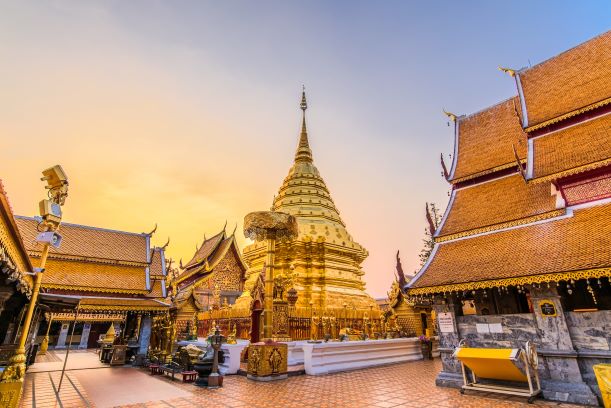
Immerse yourself in the historic city of Sukhothai, home to the ruins of the ancient capital, and witness the ethereal beauty of the White Temple (Wat Rong Khun) in Chiang Rai.
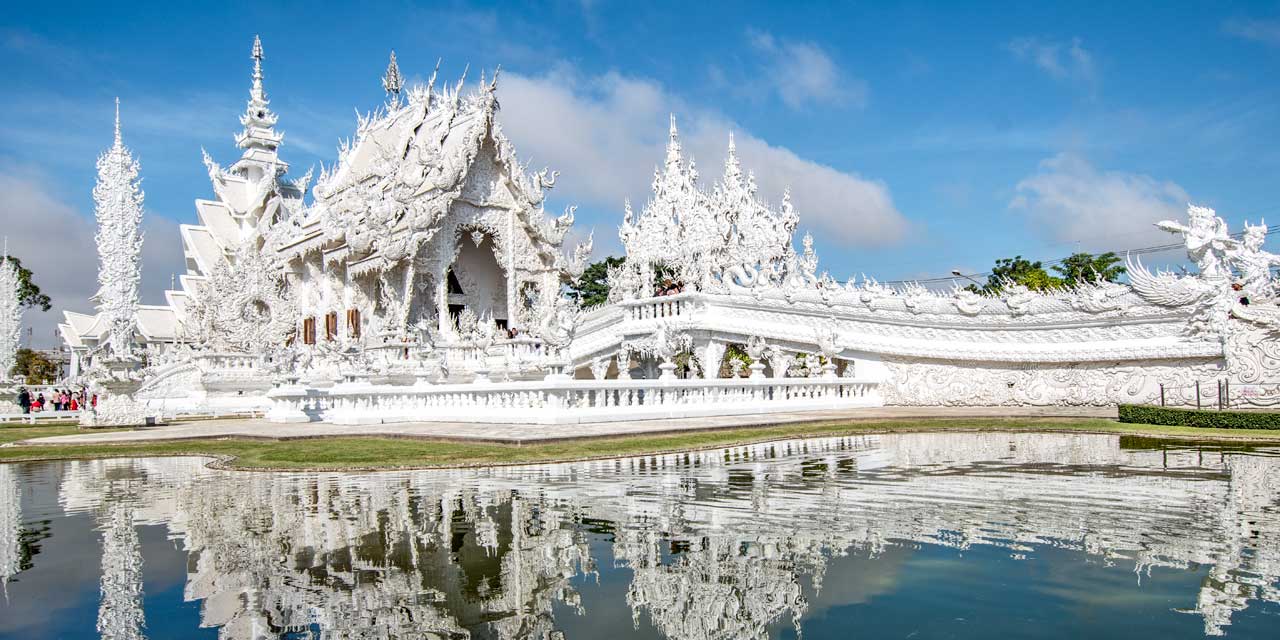
For nature lovers, a visit to the Golden Triangle, where the borders of Thailand, Laos, and Myanmar converge, is a must. Explore the quaint town of Pai, nestled in a picturesque valley, and engage in outdoor adventures like trekking and hot springs bathing. The North is a treasure trove of cultural experiences, where you can participate in traditional hill tribe village visits, learn the art of Thai cooking, and witness vibrant festivals like the Yi Peng Lantern Festival, where thousands of lanterns illuminate the night sky.

Region 2: The Enigmatic Northeast
Venture off the beaten path to Thailand's northeastern region, where authentic Thai experiences await. Explore the fascinating Khmer temples of Phimai Historical Park in Nakhon Ratchasima and unravel the mysteries of the ancient civilization. Immerse yourself in the vibrant culture of Ubon Ratchathani during the mesmerizing Candle Festival, a grand celebration of Buddhist traditions.
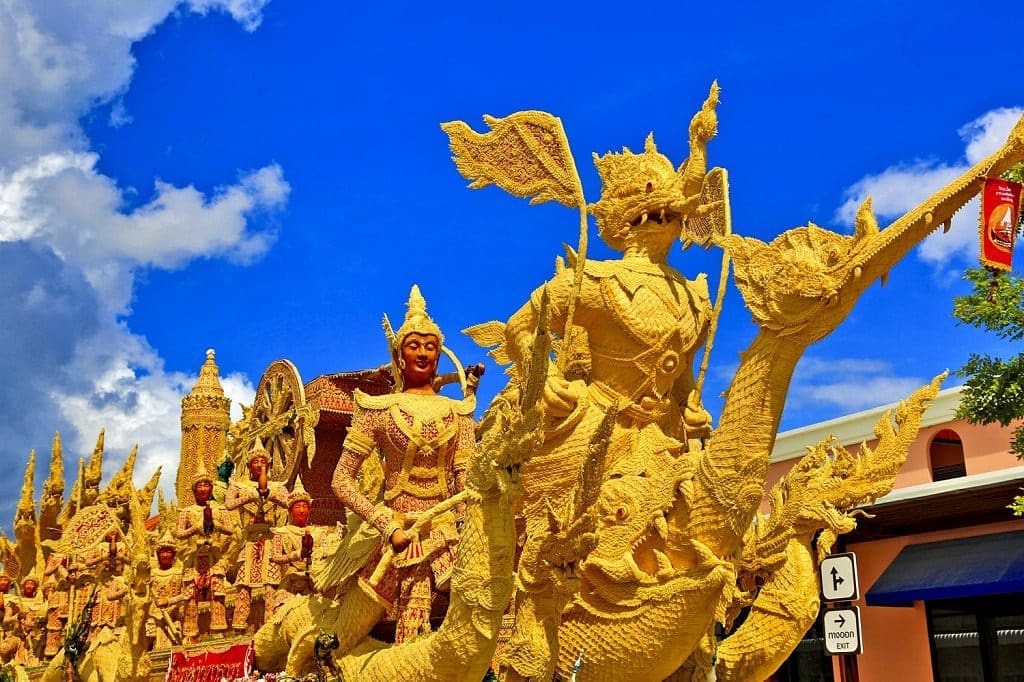
For outdoor enthusiasts, Khao Yai National Park offers lush landscapes, cascading waterfalls, and exotic wildlife, making it a nature lover's paradise. Don't miss the chance to visit the unique Red Lotus Sea in Udon Thani, where you can witness vast carpets of blooming lotus flowers, creating a mesmerizing sight. The Northeast is known for its warm hospitality, traditional music and dance performances, and mouthwatering local delicacies like som tam (papaya salad) and grilled Isaan sausages.
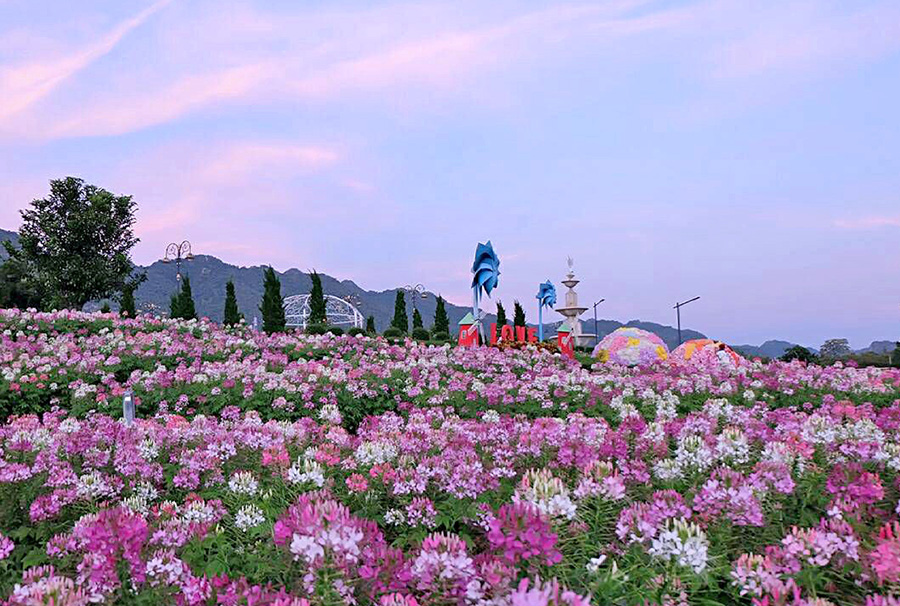
Region 3: The Captivating Central
Steeped in history and home to Thailand's bustling capital, the central region is a melting pot of ancient traditions and modern marvels. Discover the awe-inspiring Ayutthaya Historical Park, a UNESCO World Heritage Site, and witness the grandeur of its ancient temples and ruins. Get lost in the floating markets of Damnoen Saduak and savor the vibrant flavors of Thai street food.
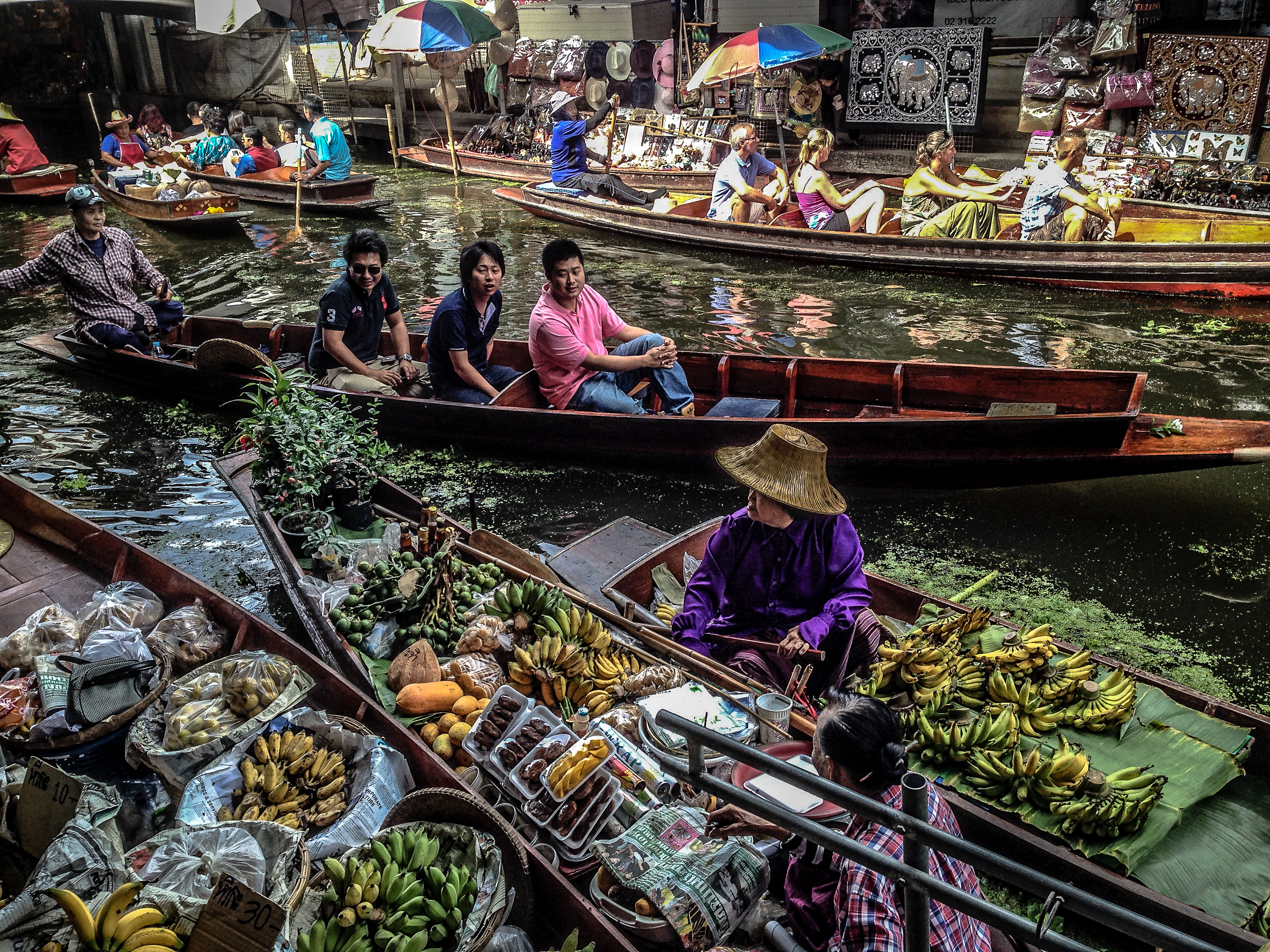
Escape the urban buzz and find tranquility in the ancient city of Lopburi, famous for its monkey population and historic temples. Pay a visit to the unique Maeklong Railway Market, where vendors set up their stalls on active train tracks, showcasing the vibrant market culture of Thailand. Indulge in the opulence of the Bang Pa-In Summer Palace, with its stunning architectural styles from various periods. Central Thailand offers a blend of historical wonders, bustling markets, and authentic cultural experiences.
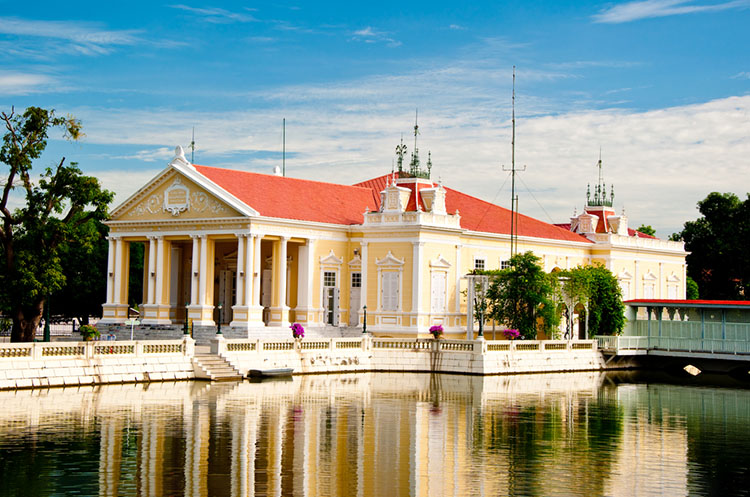
Region 4: The Idyllic South
Blessed with palm-fringed beaches and turquoise waters, the southern region of Thailand is a tropical paradise that will leave you spellbound. Explore the pristine islands of Krabi, where towering limestone cliffs meet crystal-clear waters, and embark on a snorkeling adventure in the breathtaking Similan Islands. Discover the cultural melting pot of Phuket, where vibrant festivals like the Vegetarian Festival and Loy Krathong illuminate the night skies with color and spectacle.
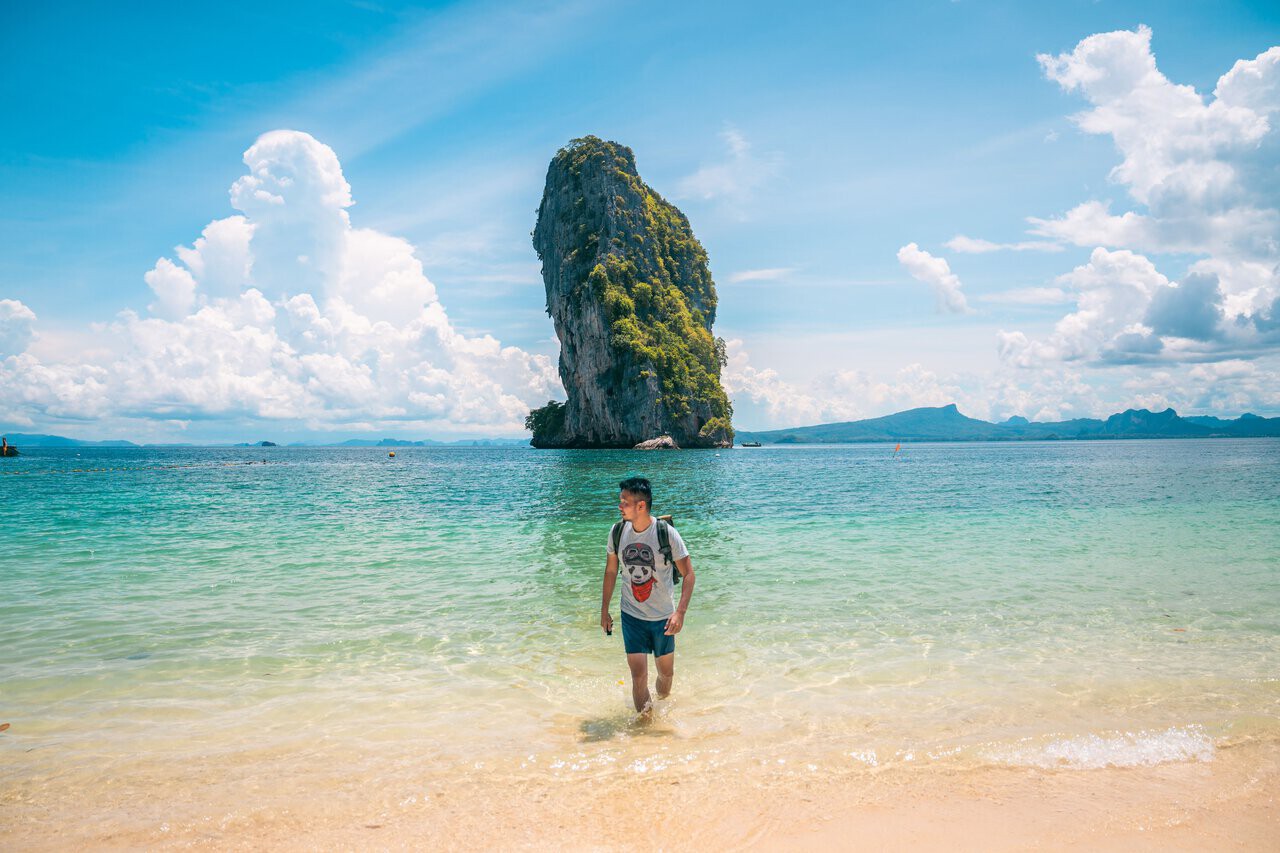
For a touch of tranquility, visit the secluded beaches of Koh Lipe and experience pure bliss. The stunning Phi Phi Islands, with their dramatic cliffs and vibrant marine life, are a must-visit for beach lovers. Immerse yourself in the vibrant nightlife of Koh Samui, with its bustling night markets and beachfront bars. Nature enthusiasts will find solace in Khao Sok National Park, home to ancient rainforests, limestone karsts, and stunning freshwater lakes. Don't forget to explore the charming city of Hat Yai, where you can indulge in shopping, vibrant street food, and the lively local markets.
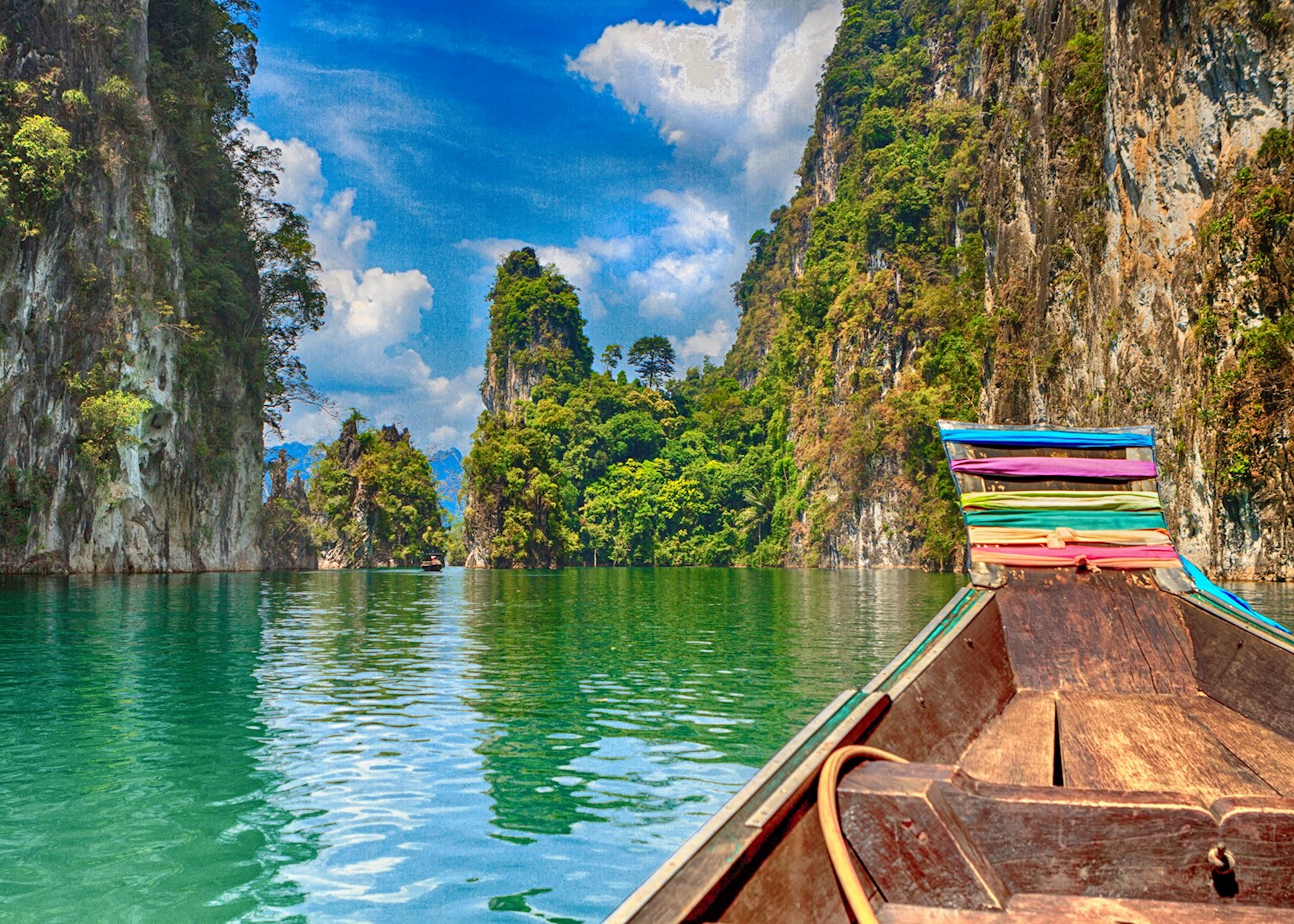
Thai Culture: Festivals and Traditions
Thai culture is a tapestry woven with rich festivals and traditions that showcase the nation's deep-rooted spirituality and vibrant heritage. From the vibrant Songkran water festival, celebrated nationwide, to the Yi Peng Lantern Festival in Chiang Mai, where the night sky is adorned with thousands of floating lanterns, each festival is a feast for the senses. Delve into the mystical world of the Phi Ta Khon Ghost Festival in Loei, where locals wear ghost masks and parade through the streets in a colorful procession, or witness the grandeur of the Royal Barge Procession in Bangkok, where intricately crafted royal barges sail along the Chao Phraya River. The vibrant Surin Elephant Round-Up showcases the close bond between humans and elephants, with spectacular shows and parades. For a cultural immersion, visit the Sak Yant Tattoo Festival in Wat Bang Phra, where devotees receive sacred tattoos from master tattooists. Throughout Thailand, temples are sacred places of worship. When visiting these temples, it is important to dress modestly, remove your shoes before entering, and show respect by not touching or pointing at sacred objects.
As you journey through Thailand, you'll be captivated by the warm smiles of the locals, the tantalizing aroma of Thai cuisine, and the serenity of ancient temples. The country's diverse landscapes, from mist-covered mountains to sun-kissed beaches, offer a myriad of experiences for every traveler. Whether you seek adventure, tranquility, cultural immersion, or simply a rejuvenating escape, Thailand promises to exceed your expectations at every turn. So, pack your bags, open your heart to new experiences, and let the Land of Smiles welcome you with open arms.
Songkran Festival (Central and Nationwide): Songkran, also known as the Thai New Year, is celebrated across the country. It usually takes place in mid-April and is known for its famous water fights. People joyfully splash water on each other to cleanse away the old year and welcome the new one.
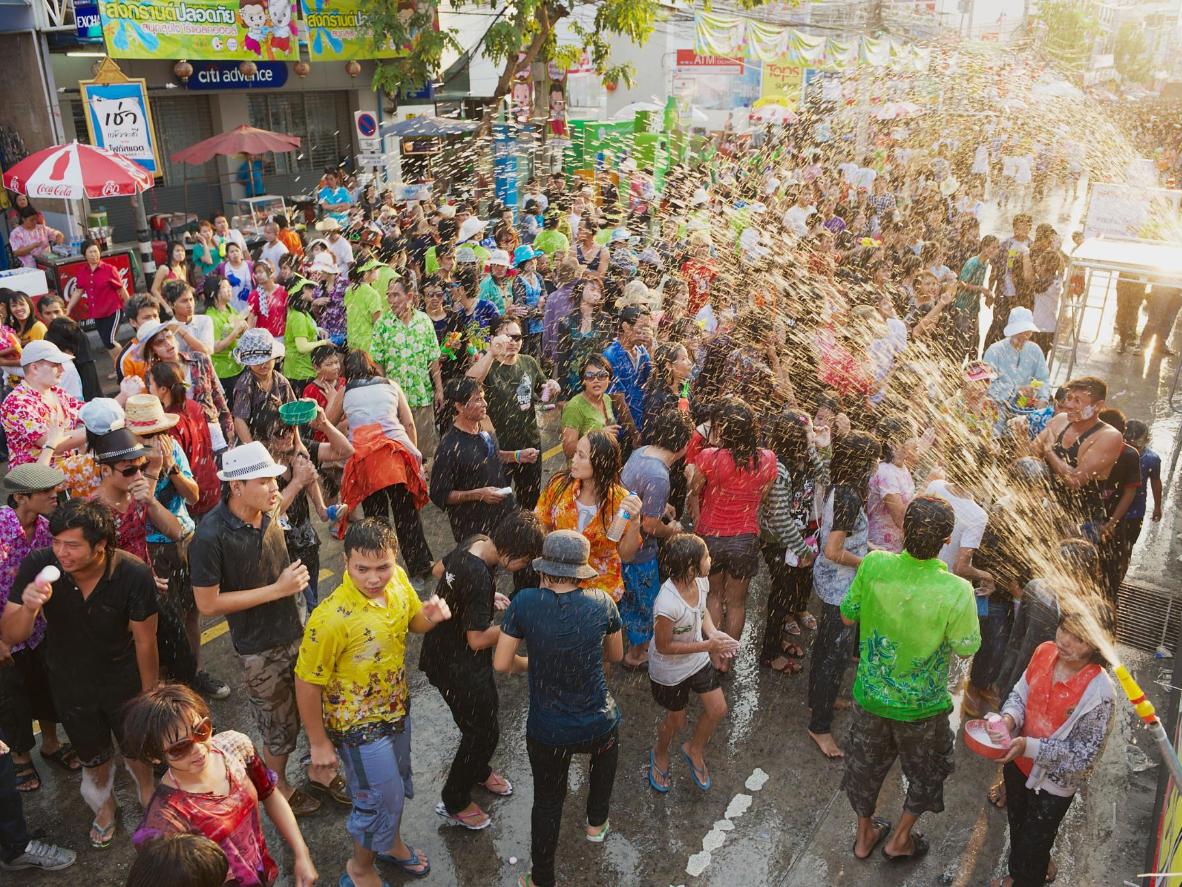
Yi Peng Lantern Festival (Northern - Chiang Mai): Yi Peng Lantern Festival is a magical celebration that takes place in Chiang Mai, usually in November. Thousands of paper lanterns, known as khom loi, are released into the night sky, creating a mesmerizing display of floating lights. It is believed to bring good luck and symbolize the release of misfortunes.

Bun Bang Fai Rocket Festival (Northeastern - Isan Region): Bun Bang Fai, also known as the Rocket Festival, is a vibrant event celebrated in the northeastern region of Thailand. It usually takes place in May. The festival involves the launching of homemade rockets into the sky, accompanied by lively parades, traditional music, and dance performances.
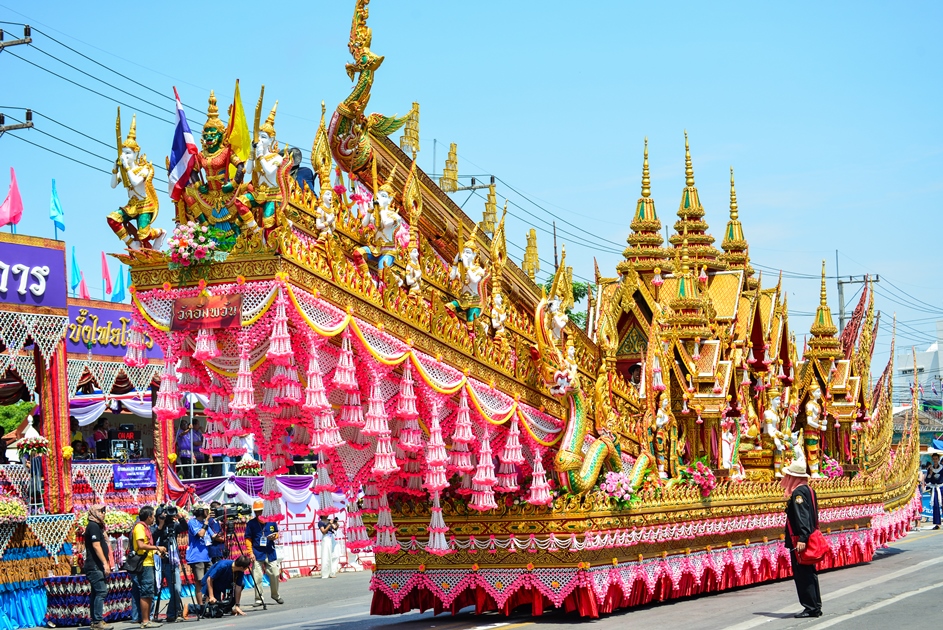
Loi Krathong Festival (Central and Nationwide): Loi Krathong is a beautiful festival celebrated throughout Thailand, usually in November. It involves floating decorative baskets, known as krathongs, on rivers, lakes, and canals. These krathongs are made of banana leaves, flowers, candles, and incense. The festival is a way to pay respects to the water spirits and release negative energy.
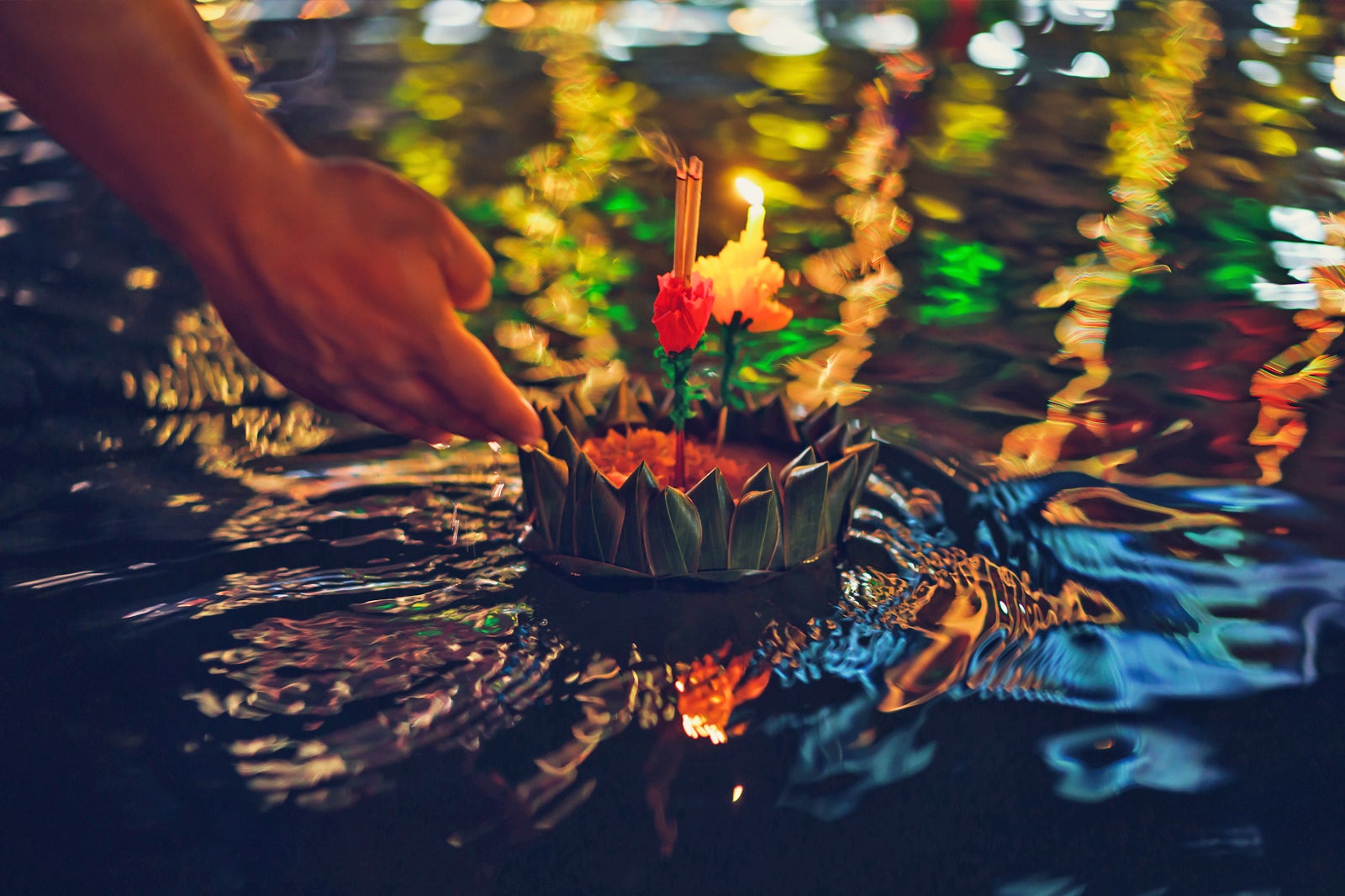
Phi Ta Khon Festival (Northeastern - Dan Sai, Loei): Phi Ta Khon, also known as the Ghost Festival, is a unique and colorful festival celebrated in the town of Dan Sai in Loei province. It usually takes place in June or July. Participants wear ghost-like masks and costumes, parade through the town, and engage in lively and playful activities.
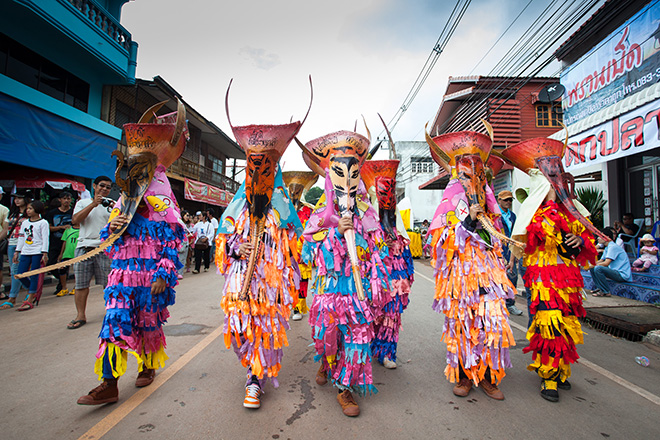
Vegetarian Festival (Southern - Phuket): The Vegetarian Festival, also known as the Nine Emperor Gods Festival, is widely celebrated in Phuket and other southern provinces. It usually takes place in September or October. Devotees observe strict vegetarian diets and participate in various ceremonies and processions to purify themselves and seek blessings.
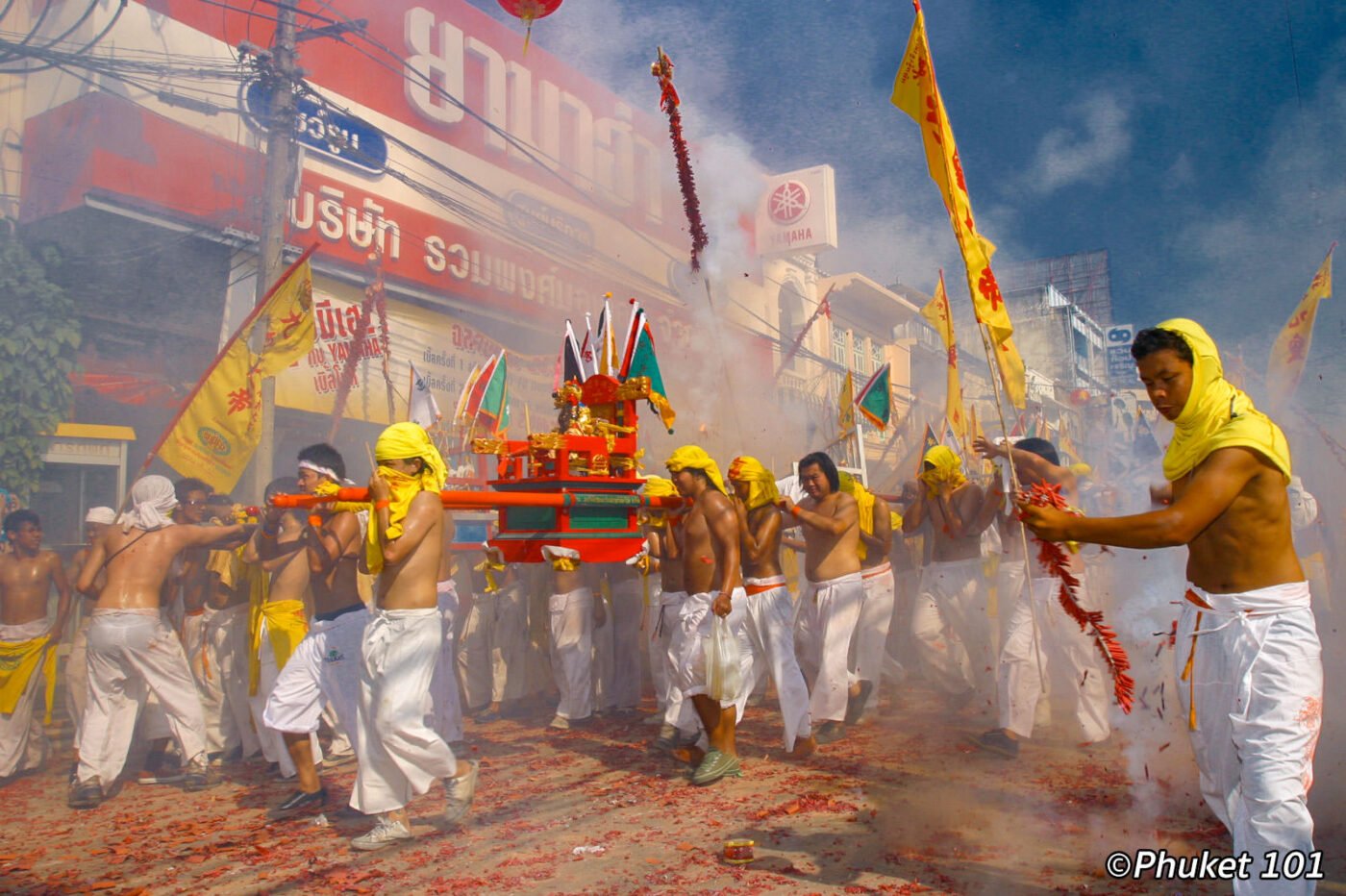
Bun Phawet Festival (Central - Ayutthaya): Bun Phawet is a traditional festival held in Ayutthaya, a historical city near Bangkok. It is celebrated on the full moon day of the sixth lunar month (around August). The festival involves paying homage to deceased relatives and ancestors by making merit, offering food to monks, and floating miniature boats made of banana leaves.
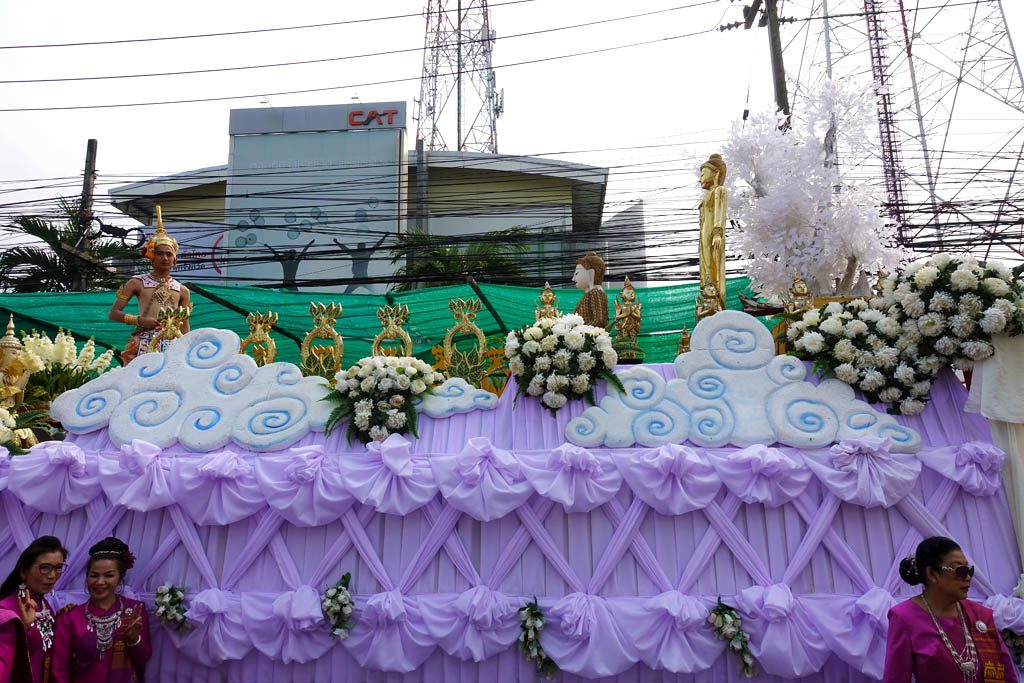
Buffalo Racing Festival (Central - Chonburi): The Buffalo Racing Festival, held in Chonburi province, is an exhilarating event that takes place annually in October. Buffalos are trained and raced by local farmers in a friendly competition. The festival also includes a range of cultural activities, parades, and beauty contests.
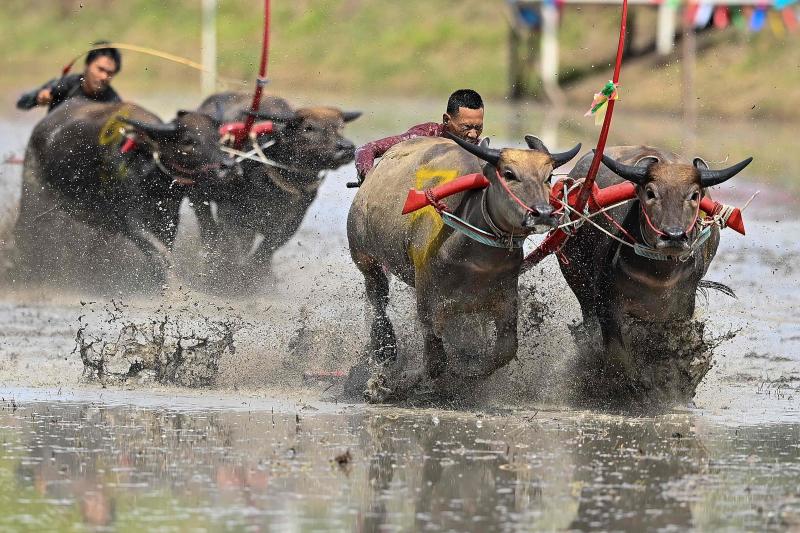
Thai Culture: Do's and Dont's
Thailand, known as the "Land of Smiles," is a country with a rich cultural heritage, and one of its most important aspects is its temples, also known as "wats." Thai temples hold deep religious significance for the Thai people and are revered as sacred spaces. When visiting these temples, it is essential to be aware of the customs and traditions to ensure a respectful and meaningful experience. Let's explore some important guidelines for do's and don'ts in Thai temples.
Thai Culture: Do's in Thai Temples
:max_bytes(150000):strip_icc()/thailand-temple-etiquette-1458306-v1-5bd9afd846e0fb005133718d.png)
Thailand, a country renowned for its vibrant culture and rich heritage, is home to numerous breathtaking temples. These sacred sites, known as "wats," hold immense religious significance for the Thai people and offer visitors a glimpse into the country's spiritual traditions. When visiting these temples, it is important to observe certain do's to ensure a respectful and meaningful experience. Let's explore some essential guidelines to follow when visiting Thai temples.
-
Dress Appropriately: Dressing appropriately is of utmost importance when entering a Thai temple. Both men and women should wear clothing that covers their shoulders and extends below the knees. Opt for loose-fitting attire made of lightweight fabric, which will not only adhere to temple etiquette but also help you stay comfortable in the tropical climate. By dressing modestly, you show respect for the sanctity of the temple and the local customs.
-
Remove Your Shoes: Before entering the temple buildings, it is customary to remove your shoes. Look for designated shoe areas or observe the locals to determine the proper protocol. This act symbolizes leaving behind the impurities of the outside world and entering the sacred space with a clean spirit. Remember to place your shoes neatly and avoid obstructing walkways.
-
Show Respect and Reverence: Thai temples are places of worship and reflection. While inside, maintain a calm and quiet demeanor. Be mindful of your actions and avoid any behavior that may disrupt the peaceful atmosphere. Refrain from talking loudly, using mobile phones, or engaging in any activities that may distract or disturb others who are praying or meditating. Show respect for the religious rituals and practices taking place within the temple by observing silently and without interference.
-
Observe and Learn: Visiting a Thai temple provides an opportunity to gain insight into Thai Buddhism and its practices. Take the time to observe and appreciate the rituals and customs taking place within the temple. Pay attention to the devotees and monks, and follow their lead in terms of posture and behavior. If you have questions or seek a deeper understanding, consider consulting a knowledgeable temple staff member or engaging a local guide who can provide accurate information.
-
Make Offerings: Making an offering to the temple is a common practice in Thai culture. It is a way to show respect and support the local community's religious practices. Lighting incense, placing flowers, or contributing to the maintenance of the temple are some examples of offerings you can make. Approach the act of making offerings with humility and mindfulness, understanding that your contribution plays a role in the temple's preservation and the continuation of religious traditions.
-
Practice Mindful Photography: Photography is often permitted in Thai temples, but it is important to be respectful and considerate when taking photos. Avoid capturing images during worship or meditation sessions, as it may disrupt the devotees' spiritual experience. Refrain from posing or taking selfies in front of Buddha images or other sacred objects, as it is considered inappropriate. Always seek permission when photographing individuals, and be aware of any specific rules or restrictions in place at the temple.
By following these do's, you can ensure that your visit to a Thai temple is not only respectful but also allows you to immerse yourself in the spiritual atmosphere and appreciate the cultural heritage of Thailand. Show reverence for the sacred space, observe the customs, and approach the experience with an open mind and a willingness to learn. Your actions will not only demonstrate respect for Thai culture but also contribute to a harmonious and meaningful encounter with the country's spiritual traditions.
Thai Culture: Don'ts in Thai Temples

When visiting the magnificent temples of Thailand, it is important to not only understand the do's but also be aware of the don'ts to ensure a respectful and harmonious experience. Thai temples, known as "wats," hold immense religious and cultural significance, and by adhering to these guidelines, you can show respect for the local customs and traditions. Let's explore some essential don'ts when visiting Thai temples.
-
Don't Dress Inappropriately: One of the most crucial don'ts when visiting a Thai temple is to avoid dressing inappropriately. Do not wear revealing clothing, such as tank tops, shorts, or clothing that exposes shoulders or knees. Revealing attire is considered disrespectful in the sacred space of the temple. By dressing modestly and respectfully, you show reverence for the sanctity of the temple and the local customs.
-
Don't Touch or Disrespect Buddha Images: Thai temples often feature exquisite Buddha images and statues, which are considered sacred objects of reverence. It is important not to touch or disrespect these images. Refrain from climbing on or leaning against Buddha statues, as it is considered highly disrespectful. Additionally, avoid pointing your feet at the images, as it is seen as an offensive gesture in Thai culture.
-
Don't Disturb Monks and Worshipers: Thai temples are places where monks and devotees come to practice their faith. It is crucial to avoid disturbing them during their prayers or rituals. Refrain from interrupting or obstructing their activities. Maintain a respectful distance from monks and devotees, allowing them to worship in peace. Be mindful of your actions and minimize any noise or disruptive behavior.
-
Don't Take Inappropriate Photos: While photography is often permitted in Thai temples, it is important to be mindful of what and when you are capturing. Avoid taking photos during worship or meditation sessions, as it may intrude on the devotees' spiritual experience. Refrain from posing or taking selfies in front of Buddha images or other sacred objects, as it is considered disrespectful. Always seek permission when photographing individuals, and be aware of any specific rules or restrictions regarding photography within the temple premises.
-
Don't Eat, Drink, or Smoke in Restricted Areas: Thai temples are sacred spaces and should be treated with the utmost respect. It is essential to refrain from eating, drinking, or smoking in areas where it is not permitted. Many temples have designated areas for these activities, so be mindful of the signs and follow the rules accordingly. By showing respect for the sacred space, you honor the traditions and beliefs of the Thai people.
-
Don't Display Public Affection: Public displays of affection, such as kissing, hugging, or engaging in intimate behavior, are not appropriate within the temple grounds. Thai temples are places of spiritual contemplation and devotion, and such behavior is seen as disrespectful and inappropriate. Maintain a respectful and reverent atmosphere by refraining from any public displays of affection.
By adhering to these don'ts, you demonstrate your respect for Thai culture and contribute to a harmonious and meaningful visit to Thai temples. Remember to approach your visit with a sense of reverence and appreciation for the spiritual significance of these sacred spaces. By being mindful of the don'ts, you can ensure that your experience is not only respectful but also enriching as you immerse yourself in the cultural heritage of Thailand.